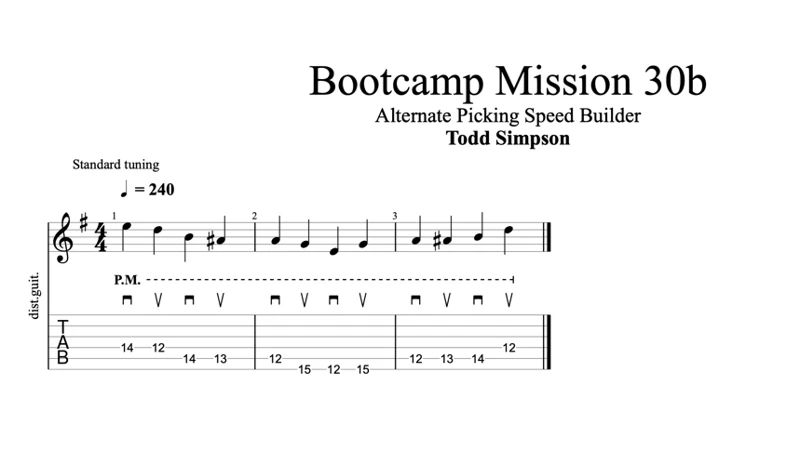Country music is a genre known for its rich melodies, heartfelt lyrics, and intricate guitar solos. One of the key techniques that sets country guitar solos apart is alternate picking. Alt picking, as it’s commonly referred to, involves using a combination of downstrokes and upstrokes to pick individual notes in a solo. This technique not only adds speed and precision to your playing but also gives your solos a distinct twang that is characteristic of country music. In this article, we will delve into the world of alt picking in country solos and explore how you can incorporate this technique into your own playing to create captivating and dynamic solos.
Benefits of Alt Picking in Country Solos
Alt picking is a versatile technique that offers a range of benefits when incorporated into country solos. One of the primary advantages of alt picking is its ability to enhance the speed and fluidity of your playing. By alternating between downstrokes and upstrokes, you can pick notes more quickly and smoothly, allowing you to execute fast runs and intricate licks with precision.
Additionally, alt picking can help you achieve a more dynamic and expressive sound in your solos. The alternating motion of the pick creates a subtle accent on each note, adding a rhythmic quality to your playing that can make your solos more engaging and interesting to listen to. This rhythmic emphasis can also help you create a sense of groove and momentum in your solos, allowing you to convey emotion and energy through your playing.
Furthermore, alt picking can improve your overall technique and dexterity on the guitar. By practicing alternate picking exercises, you can strengthen your picking hand muscles and develop greater coordination between your picking hand and fretting hand. This improved dexterity will not only benefit your country solos but will also enhance your playing across a variety of musical styles.
How to Practice Alt Picking
To master alt picking in country solos, it is essential to practice the technique regularly and methodically. One effective way to practice alt picking is to start with simple exercises that focus on alternating between downstrokes and upstrokes on a single string. Begin by picking a series of consecutive notes using alternate picking, making sure to maintain a steady rhythm and consistent picking motion.
As you become more comfortable with the basic mechanics of alt picking, you can gradually increase the speed and complexity of your exercises. Practice playing scales, arpeggios, and licks using alt picking, paying close attention to your picking hand technique and ensuring that each note is played cleanly and evenly.
Another helpful exercise for developing alt picking proficiency is to practice string skipping patterns. String skipping involves picking notes on non-adjacent strings, which can be challenging but highly rewarding for improving your picking accuracy and coordination. Start with simple string skipping patterns and gradually work your way up to more complex sequences as you build confidence in your alt picking abilities.
Common Alt Picking Patterns in Country Solos
In country music, there are several common alt picking patterns that are frequently used in guitar solos. One of the most popular patterns is the “down-up” pattern, where each note is picked with a downstroke followed by an upstroke. This pattern creates a smooth and fluid motion that is well-suited to fast-paced country solos and helps maintain a consistent rhythm throughout the solo.
Another common alt picking pattern is the “down-down-up” pattern, where two consecutive downstrokes are followed by an upstroke. This pattern is often used in country solos to create a driving and syncopated feel, adding a sense of energy and momentum to the music.
Additionally, the “up-down-up” pattern is another popular alt picking pattern in country solos. This pattern begins with an upstroke followed by a downstroke and another upstroke, creating a unique and dynamic sound that can add a sense of unpredictability and excitement to your solos.
By incorporating these alt picking patterns into your country solos, you can create a diverse range of sounds and textures that will captivate listeners and showcase your technical prowess as a guitarist.
Tips for Incorporating Alt Picking Into Your Country Solos
When incorporating alt picking into your country solos, there are several tips to keep in mind to ensure that you achieve the best results. Firstly, focus on maintaining a relaxed and fluid picking motion to avoid tension and fatigue in your picking hand. Keep your wrist loose and relaxed, and practice picking with a light touch to produce a smooth and even sound.
Secondly, pay attention to your picking angle and hand position to maximize your picking efficiency and accuracy. Experiment with different pick angles and hand placements to find the most comfortable and effective position for executing alt picking patterns.
Additionally, practice playing country solos at varying tempos to develop your alt picking technique across different speeds. Start slow and gradually increase the tempo as you build confidence and proficiency in your picking abilities. This will help you develop a sense of control and precision in your playing that will enhance the overall quality of your country solos.
Finally, listen to and study the solos of renowned country guitarists to gain inspiration and insight into how alt picking is used in the context of country music. Analyze the techniques and phrasing of these guitarists and incorporate elements of their playing style into your own solos to create a unique and authentic sound.
Looking to improve your country guitar solos? Check out our articles on Travis picking in country music, Travis picking for country guitar, and alt country guitar picks for different techniques and styles. Avoid these 5 mistakes when using hybrid picking in country music and learn from the best country guitarists who use hybrid picking in their playing!
Conclusion
Alt picking is a fundamental technique in country guitar playing that can elevate your solos to new heights of speed, precision, and expression. By practicing alt picking regularly and incorporating it into your country solos, you can enhance your playing technique, develop your musicality, and create captivating and dynamic solos that will impress audiences and fellow musicians alike. So, pick up your guitar, practice those alt picking exercises, and get ready to dazzle with your country solos!




